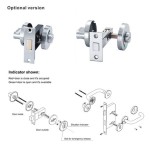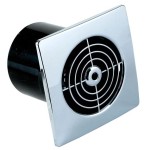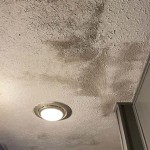Pipe Under Bathroom Sink Broke: A Guide to Understanding and Addressing the Issue
A pipe under the bathroom sink breaking is a common plumbing problem that can cause significant water damage and disrupt daily routines. This issue arises from various factors, including age, corrosion, improper installation, and excessive pressure. Understanding the potential causes, identifying the specific problem, and taking appropriate steps to address it are crucial to prevent further damage and ensure a functional bathroom.
Causes of a Broken Pipe Under the Bathroom Sink
Several factors contribute to a pipe under the bathroom sink breaking. These include:
- Age: Over time, pipes can deteriorate due to corrosion, wear and tear, and exposure to various elements. Older pipes, especially those made of galvanized steel, are more susceptible to leaks and breaks.
- Corrosion: Exposure to water, minerals, and chemicals can lead to corrosion, weakening the metal structure of the pipe and increasing the risk of breakage.
- Improper Installation: Incorrect installation, including inadequate support or improper joining techniques, can cause stress on the pipe, leading to leaks and eventual breaks.
- Excessive Pressure: High water pressure can put significant stress on the pipes, potentially causing them to burst or leak. This is particularly a concern in areas with high water pressure or when using older pipes.
- Freezing Temperatures: When water freezes inside the pipes, it expands, putting pressure on the pipe walls, which can lead to cracks or breaks. This is a common problem in areas with cold climates or when pipes are located in unheated areas.
Identifying the Specific Problem
Once a broken pipe under the bathroom sink is identified, the next step is to determine the nature of the issue. This involves carefully inspecting the pipe and surrounding area, looking for signs of damage, leaks, and corrosion.
- Location of the leak: Pinpoint the specific area where the pipe is leaking or broken. This will help you determine the necessary repairs.
- Type of pipe: Identify the material of the pipe, such as copper, PVC, or galvanized steel. This information will help you choose the appropriate repair method.
- Extent of damage: Assess the severity of the damage to the pipe. A small crack may be repairable with a sealant, while a large break may require replacement.
Addressing the Broken Pipe
Once the specific problem has been identified, it's time to address the broken pipe. The following steps outline potential solutions:
- Turn off the water supply: Before attempting any repairs, shut off the water supply to the sink. This can usually be done by turning the valve located under the sink or in the basement.
- Dry the area: After turning off the water, dry the surrounding area to prevent further damage and mold growth.
- Minor leaks: For minor leaks, you may be able to apply a sealant or pipe repair kit to the broken area. This is a temporary solution for small cracks and should be followed by professional evaluation and repair.
- Major breaks: If the pipe is severely broken, you will need to replace the damaged section. This requires specialized skills and knowledge, so it's recommended to hire a qualified plumber.
- Professional evaluation: Regardless of the repair method chosen, it's crucial to seek professional evaluation after addressing the issue. A plumber can assess the overall condition of the pipes, identify any underlying problems, and recommend preventive measures.
Prevention and Maintenance
To minimize the risk of a pipe under the bathroom sink breaking, regular maintenance and preventive measures are essential. Some helpful tips include:
- Inspect pipes regularly: Regularly inspect pipes for signs of corrosion, leaks, or damage. Early detection allows for timely repairs and prevents major issues.
- Maintain water pressure: Ensure water pressure is within the recommended range. Excessive pressure can put strain on pipes, increasing the risk of leaks and breaks.
- Insulate pipes: In areas susceptible to freezing temperatures, insulate pipes to prevent water from freezing and expanding, potentially causing damage.
- Avoid chemical exposure: Minimize the use of harsh chemicals, such as drain cleaners, which can corrode pipes over time.
- Professional inspections: Schedule periodic professional inspections to assess the overall condition of the plumbing system and address any potential problems before they become major issues.

Common Sink Leaks You Could Probably Fix Yourself

Sink Drain Pipe Broken Rotted From Wall With Photo Doityourself Com Community Forums

Bathroom Drain Pipe Broke Off At Wall Doityourself Com Community Forums

Bathroom Drain Pipe Broke Off At Wall Doityourself Com Community Forums

Bathroom Sink Drain Leaking Around Threads Premier Plumbing Inc

Bathroom Drain Pipe Broke Off At Wall Doityourself Com Community Forums

How To Identify If Your Water Pipes Are Burst

How To Fix A Leaking Bathroom Sink Paschal Air Plumbing Electric

Bathroom Sink Pvc Plastic Drain Pipe Leak Repair Sylmasta Net

Sink Drain Pipe Broken Rotted From Wall With Photo Doityourself Com Community Forums
Related Posts







